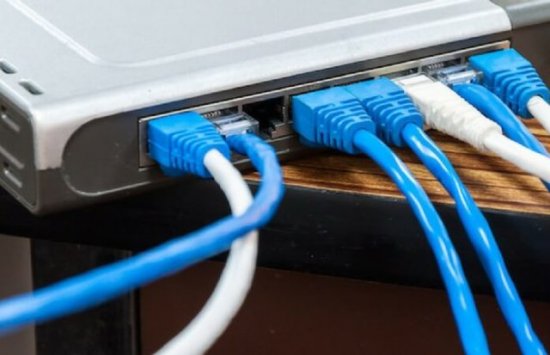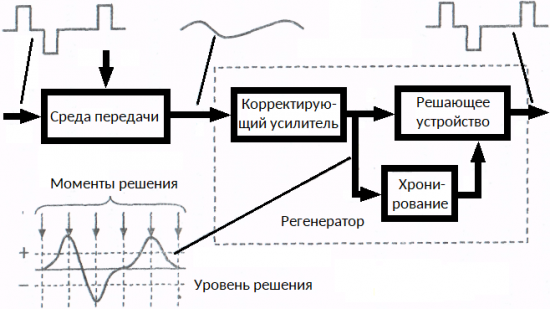How a digital signal is transmitted over a distance
If an analog signal is continuous, then a digital signal is a signal that is a sequence of discrete (clearly separated in magnitude and time) values that are multiples of a certain minimum value.
In the modern world, when transmitting information, binary signals, so-called bit streams (sequences of «0» and «1») are most often used, since sequences of this format can be easily encoded and immediately used in binary electronics… To transmit a digital signal over an analog channel (radio or electrical), it is converted, that is, modulated. And on reception, they demodulate it back.
The digital signal has an important property, namely the ability to completely regenerate it in the repeater. And when the digital signal transmitted in the communication system is noisy, then in the repeater it can be restored to a certain signal / noise ratio. That is, if the signal has arrived with minor interference, it is converted to digital form and completely re-formed in the repeater — it is restored in this way.
But if the distorted signal is analog, then it must be amplified along with the superimposed noise. But if the incoming digital signal is received with strong interference, for example, with the impact of a steep cliff, it will be completely impossible to recover it completely, because parts will still be lost.
An analog signal, even with strong interference, can still be restored to some acceptable form when it will be possible to extract some information from it, albeit with difficulty.
Analog cellular communication in AMPS and NMT format, compared to digital cellular communication in GSM and CDMA formats, allows you to have a conversation with interference, while with interference in digital communication it will not work, because whole pieces will fall out of the conversation.
To guard against such problems, the digital signal is often regenerated by building regenerators into the communication line break if it is long enough or the distance from the base station to the mobile phone is reduced—base stations are located on the ground more often. Algorithms for verification and restoration of digital information in digital systems make it possible to increase the reliability of the transmission of information in digital form.
So, as noted above, the most important characteristic of a digital signal during its transmission is that the pulse sequence can be recovered after it has passed through a medium that introduces dispersion and interference. The medium can be wired or wireless.
Regenerators are placed along the line at a certain distance from each other. Sections with cables and regenerators are called regeneration sections.The regenerator corrects the shape of the received pulses, restores the intervals between them (clocks) and practically reproduces the pulse sequence again.
Assume that a series of positive, negative pulses and gaps is obtained from the output of the previous regenerator. Then the pulses at the input of the next regenerator have distortions, for example after transmission by cable or from external electromagnetic influences.
The correction amplifier corrects the shape of the pulses, increases their amplitude to such an extent that the next block can understand whether there is a pulse here or not, and decide whether to restore it at the current moment or not.
Next comes the timing and regeneration operation, which are performed simultaneously. Moreover, regeneration is only possible when at the regenerator solution point the sum of the amplitudes of the input pulse and the disturbance exceeds the threshold level of the regenerator solution and the timing signal during the solution has the correct amplitude and polarity.
The timing signal gives a time sample of the rectified pulses reflecting the maximum signal to noise ratio and also arranges the pulses correctly in the sequence.
Ideally, a regenerated sequence will be obtained at the output of the regenerator, which will be an exact copy of the pulse sequence transmitted by the previous section of the communication line.
In reality, the recovered sequence may differ from the original.But errors can appear if there is large amplitude noise at the input, in a decoded analog signal it looks like the appearance of noise, and errors related to the intervals between pulses can cause phase fluctuations in their relative position at the output.
In analog signals, these fluctuations appear as sampling noise, and in subsequent regeneration they will show up. In addition, positive and negative output pulses with inaccurate power supply can differ from each other in amplitude, which also contributes to errors in the next stage of digital signal regeneration.



